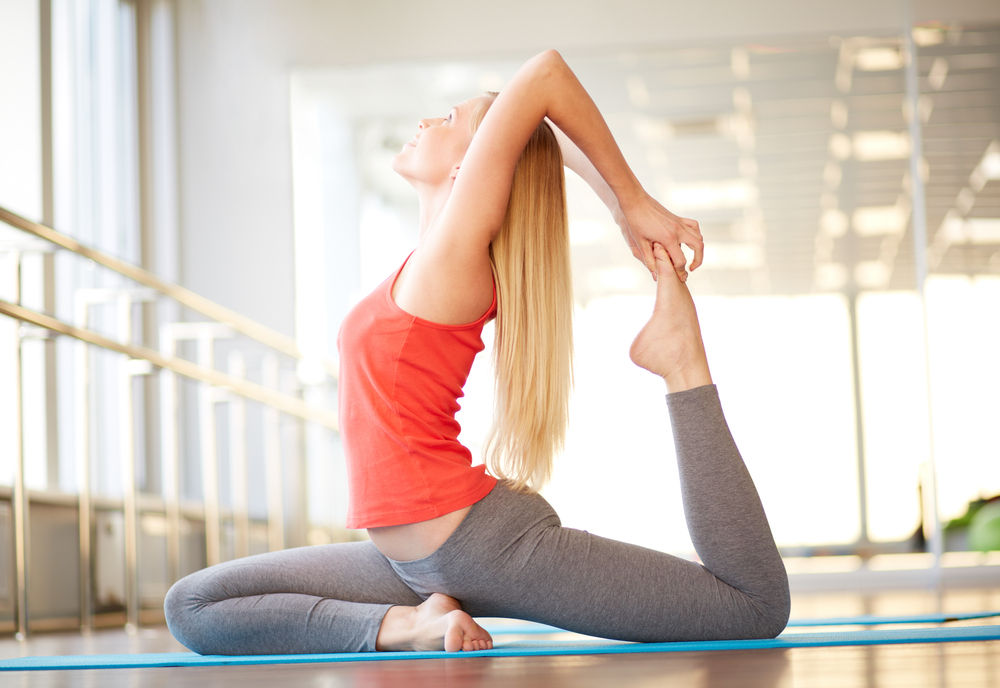
Keeping your muscles and ligaments flexible is important because tight muscles can cause chronic pain. Flexibility training helps balance muscle groups that might be overused during exercise or physical activity or as a result of bad posture.
Muscular imbalance brought about by unhealthy lifestyle can make the joint weaker, as parts of the bone bare more weight than they should. In many cases, back pain is caused by tight hamstrings which “cause the hips and pelvis to rotate back, flattening the lower back and causing back problems.
A little stretching can go a long way to enhance your overall fitness.
Goals

When stretching for the purpose of increasing overall flexibility, a stretching routine should accomplish, these goals:
- To train your stretch receptors to become accustomed to greater muscle length. The nerve endings that relay all the information about the musculoskeletal system to the central nervous system are called proprioceptors. Proprioceptors (also called mechanoreceptors) are the source of all proprioception: the perception of one’s own body position and movement. Muscle spindles, or stretch receptors, are the primary proprioceptors in the muscle. The muscle spindle contains two different types of fibers (or stretch receptors) which are sensitive to the change in muscle length and the rate of change in muscle length.
- To reduce the resistance of connective tissues to muscle elongation. The resistance to lengthening that is offered by a muscle is dependent upon its connective tissues: When the muscle elongates, the surrounding connective tissues (located all around the muscle and its fibers) become more taut. Also, inactivity of certain muscles or joints can cause chemical
Connective Tissue
changes in connective tissue which restrict flexibility. When connective tissue is overused, the tissue becomes fatigued and may tear, which also limits flexibility. When connective tissue is unused or under used, it provides significant resistance and limits flexibility. The elastin begins to fray and loses some of its elasticity, and the collagen increases in stiffness and in density. Aging has some of the same effects on connective tissue that lack of use has.
- Strengthen the muscles responsible for holding the stretched limbs in their extended positions. Strength training and flexibility should go together as these enhance one another. If you are attempting to increase active flexibility, you should also strengthen the muscles responsible for holding the stretched limbs in their extended positions. One of the best times to stretch is right after a strength workout – this will help increase flexibility, promote muscle growth and decrease the level of post-exercise soreness
If you are very serious about increasing overall flexibility, then I recommend religiously dhering to the following guidelines:
- Perform early-morning stretching everyday
- Warm-up properly before any and all athletic activities. Make sure to give yourself ample time to perform the complete warm-up. Greater flexibility will be maintained if the tissues are stretched while they are warm and then held in a stretched position as the muscles and tendons cool down. Steady breathing, in and out, should also be maintained as one holds the stretch.
- Cool-down properly after any and all athletic activities.
- Always make sure your muscles are warmed-up before you stretch!
- Perform PNF stretching every other day, and static stretching on the off days (if you are overzealous, you can try static stretching every day, in addition to PNF stretching every other day).
Overall, you should expect to increase flexibility gradually. However, If you really commit to doing the above, you should achieve maximal upper-body flexibility within one month and maximal lower-body flexibility within two months. If you are older or more inflexible than most people, it will take longer than this.
Don’t try to increase flexibility too quickly by forcing yourself. Stretch no further than the muscles will go without pain.
| Aging Vs Flexibility | |
|